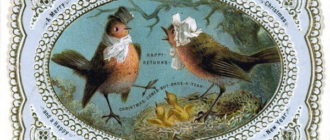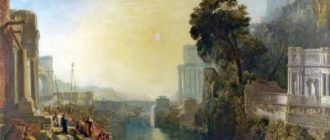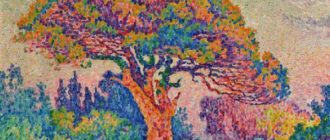
Saturn Devouring His Son is a painting (fresco) by Francisco José de Goya y Lucientes, where the plot of the ancient Greek myth of the monster Kronos is vividly and vividly captured.
According to legend, the titan Kronos (the Romans called him Saturn) received a prediction that he would fall by the hand of one of his offspring. Fearing prophecy, Kronos-Saturn ate his own children immediately after birth. This continued until Rhea (the titan’s wife) managed to save one of the kids. She hid and gave birth to a child in a cave in Crete. Instead of a baby, the goddess slipped a stone to her husband, which was swallowed. The surviving child was named Zeus.
Years later, the prophecy was fulfilled. Zeus started a war with his father, which lasted 9 years, but defeated him not by force, but by cunning. Kronos was defeated and went to Tartarus. This myth served as the basis for the work. According to legend, the bloodthirsty father simply swallowed the babies, and they remained alive even inside him. Hestia and Demeter, Hades and Hera, as well as Poseidon were the predecessors of Zeus, who fell into the bottomless mouth of their parent. The original story ended to everyone’s relief: the babies were freed and became Olympic gods.
Painting Saturn Devouring His Son by Francisco Goya is an eerie masterpiece based on an ancient myth
However, Goya’s masterpiece hallucination does not leave the viewer even a shadow of hope for a successful outcome. Against the hopelessly dark background, an insane, naked old man tears a child’s body to pieces with teeth and claws. The titan’s black mouth, its distorted, not human, but, rather, animal proportions, terribly bulging eyes, streams of blood, long, gray hair – such a monster can only be dreamed of in the wildest nightmare. And it is absolutely merciless, like Time, which is personified by Kronos. The picture is not just gloomy. She is disturbing, shocking. The son of Kronos does not even have a tiny chance of salvation. This is the most terrifying and dramatic work of the master.
Author: Francisco Goya (1746-1828).
Year of writing: 1819-1823
Size: 146 x 83 cm.
Style: Romanticism.
Series: “Black Pictures” (Spanish: Pinturas Negras).
Genre: Mythological.
Technique: Oil. Wall painting.
Material: Canvas. Location: Prado National Museum, Madrid, Spain.
Francisco Goya is a Spanish painter, one of the first great painters of the Romantic era.
The future master was born in the Spanish Zaragoza. The family did not live in poverty: the father was engaged in gilding, the mother came from a noble family. The boy was not given a good education, but he studied painting wherever he could. The fresco “Saturn Devouring His Son” was painted on the wall of a two-story building near the capital.
The master moved into the mansion, which was named “Villa of the Deaf” (Spanish Quinta del Sordo), 9 years before his death, in 1819. Several years before the purchase of the villa turned out to be very difficult for both the artist and the country. Against the backdrop of the French occupation and mass shootings, the genius’s personal tragedies unfolded.
In 1812, his first wife passed away, with whom the master lived for several decades and buried several children. Before that, Goya’s beloved woman was poisoned. Then an illness followed, which almost cost the painter his life. Perhaps it was these events that made Goya paint his new home with scary, “black” hallucination paintings that were designed to express all his shock and pain.
After the death of the author, “dark paintings”, including “Saturn” were transferred to canvas by Salvador Martínez Cubells for a Paris exhibition. “Saturn” did not delight the audience. Later, the masterpiece was donated to the Prado Museum.
The painting “Saturn Devouring His Son” by Francisco Goya got its name much later than it was written. The master did not name his frescoes at all – he left them unnamed. One thing is certain – the masterpiece is not in vain considered one of the most cruel and terrible works of art in the world. But that’s what the artist wanted to tell them – one can only guess.






